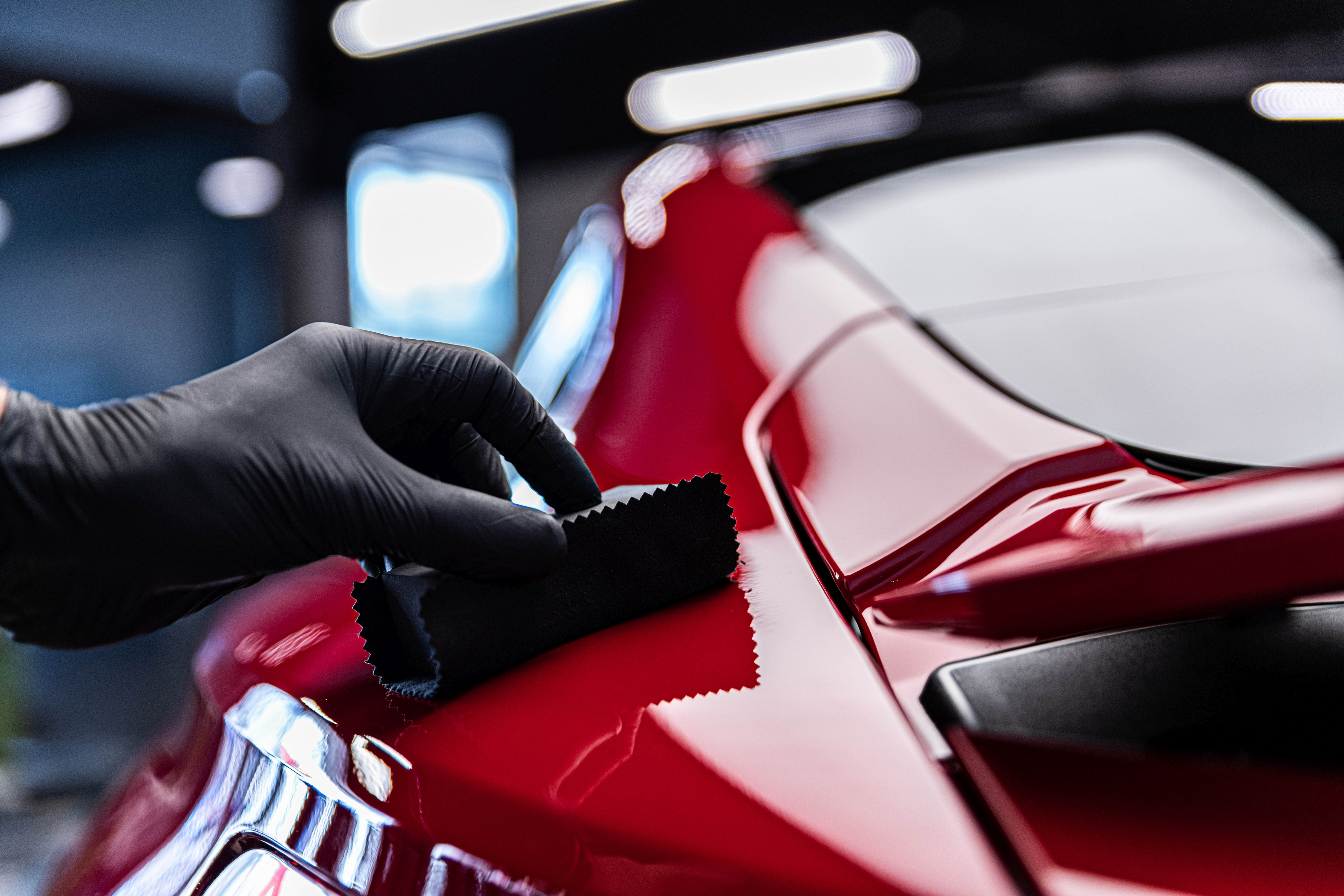Frequently Asked Questions About Ceramic Coating Philadelphia Solutions Answered
Frequently Asked Questions About Ceramic Coating Philadelphia Solutions Answered
Blog Article
Why Ceramic Finish Is the Ultimate Service for a Perfect Complete
Ceramic coating has arised as a leading solution for those looking for a flawless surface for their cars, many thanks to its remarkable sturdiness and safety attributes. What variables absolutely established ceramic finishing apart?
What Is Ceramic Coating?

When applied correctly, ceramic coating develops a hydrophobic surface area that repels water and dust, making it easier to keep and clean up. Unlike standard waxes or sealers, which commonly provide short-lived defense, ceramic coverings can last for a number of years, depending on the item quality and application technique. The procedure of using ceramic finish needs precise preparation, consisting of detailed cleaning and in some cases repaint modification, to make sure ideal bonding and efficiency.
Ceramic coverings are not limited to vehicle surface areas; they can likewise be made use of on different materials, consisting of glass, metal, and plastics, providing a versatile solution for boosting security. In general, ceramic layer stands for a considerable improvement in surface area security technology, integrating both functional and visual benefits for a vast array of applications.
Advantages of Ceramic Layer
While lots of surface area protection alternatives exist, the benefits of ceramic coating attract attention because of its special homes and durable performance. One of the main advantages is its phenomenal resilience. Ceramic Coating Philadelphia. Unlike standard wax or sealants that call for regular reapplication, ceramic layers give a durable layer that can last for several years, significantly lowering maintenance efforts
One more notable advantage is boosted defense versus environmental contaminants. Ceramic coatings produce a hydrophobic surface that pushes back water, dirt, and numerous contaminants, making it easier to cleanse. This attribute not only preserves the car's appearance however likewise lessens the threat of corrosion and oxidation, specifically in severe climate condition.
Moreover, ceramic layers provide premium resistance to UV rays, protecting against fading and deterioration of paint over time. This UV defense is critical for keeping the visual worth of surfaces and lorries subjected to guide sunlight.
In addition, the glossy surface accomplished with ceramic finishing improves the general aesthetic appeal, giving surface areas a showroom-quality luster. Overall, ceramic layers stand for a substantial advancement in surface defense technology, supplying long-lasting advantages that provide to both practical and aesthetic needs.
Exactly How It Works
Understanding the science behind ceramic coatings reveals exactly how they offer such impressive defense and longevity. At its core, a ceramic layer is a fluid polymer that chemically bonds with the lorry's manufacturing facility paint. This bonding develops a protective layer that is both oleophobic and hydrophobic, repelling water, dirt, and oil. The key part of most ceramic layers is silicon dioxide (SiO2), which is obtained from quartz. This substance contributes to the finishing's firmness and resistance to scratches, UV rays, and environmental contaminants.
The application procedure includes numerous steps, including surface preparation, which is crucial to attaining optimum attachment. As soon as applied, the finish undergoes a treating procedure, during which it sets and creates a semi-permanent bond with the paint surface. This bond is what distinguishes ceramic finishings from traditional waxes and sealers, giving a longer-lasting safety barrier that can endure for years.
Additionally, the thickness of the coating can improve its protective top qualities, making certain that it can endure extreme problems. Eventually, the scientific research of ceramic finishings combines advanced materials with cutting-edge application methods to deliver an exceptional level of defense and visual enhancement for automobiles.
Comparison With Typical Techniques
When compared to standard paint protection methods such as sealants and waxes,The benefits of ceramic layers end up being especially apparent. While waxes provide a short-term sparkle, usually lasting a few weeks to a couple of months, ceramic layers supply a lasting safety layer that can withstand for several years. This longevity dramatically lowers the frequency of reapplication, making ceramic layers a much more cost-effective option over time.
Furthermore, traditional methods usually need considerable prep work and numerous applications to accomplish a sufficient degree of security. On the other hand, ceramic finishes bond click here to find out more at a molecular degree with the automobile's surface area, creating a durable shield versus ecological contaminants like UV rays, acid rainfall, and road salts. This bond enhances the car's resistance to scratches and swirl marks, which prevail with traditional waxes and sealers.
Additionally, the hydrophobic buildings of ceramic finishings drive away water and dust, leading to simpler cleaning and upkeep. In comparison, wax and sealant-treated surfaces can draw in gunk, necessitating more frequent cleaning - Ceramic Coating Philadelphia. In general, ceramic finishes not only give superior security but also supply a more long-lasting and visually attractive coating, developing them as the preferred option for critical car proprietors
Application and Upkeep Tips

Utilizing a foam applicator, use the covering in tiny sections, adhering to the maker's standards regarding thickness and overlap. Allow sufficient healing time between layers, normally 1 day, to make sure appropriate bonding. After application, it is important to avoid exposure to water or rough components for at the very least a week to permit the finishing to fully cure.
Additionally, utilizing a ceramic maintenance spray can enhance the covering's hydrophobic properties and long life. Regular inspections for any signs of wear will certainly assist preserve the finishing's stability and maintain that immaculate finish.
Final Thought
In verdict, ceramic layer emerges as a superior alternative for accomplishing a perfect automobile surface. Its remarkable toughness, safety top qualities, and hydrophobic residential or commercial properties dramatically improve the car's appearance while simplifying maintenance efforts. By creating a robust bond with manufacturing facility paint, ceramic layer successfully shields against scrapes, UV rays, and ecological pollutants. With a lifespan prolonging numerous years, this sophisticated solution not just maintains however also raises the overall visual appeal of vehicles, making it a cost-effective investment for automobile lovers.

Report this page